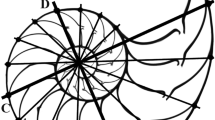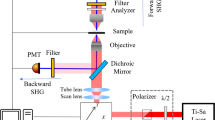Abstract
Autotomy, the self-induced loss of a body structure, occurs in every living class of echinoderms and is related to the remarkable regeneration capabilities of the group. It is particularly prevalent in brittle stars (Class Ophiuroidea). Autotomy is facilitated by mutable collagenous tissue, which undergoes nervous system-mediated changes in tensile stiffness, tensile strength, and viscosity. The previous investigations of autotomy have been based on observations of the external surface, surgical manipulation of internal structures, or data on the morphology of structures post-autotomy. We used fast phase-contrast X-ray synchrotron imaging to visualize full autotomy events in vivo in the arms of specimens of the brittle star Ophioderma brevispina. This method requires no chemical or surgical manipulation and enabled us to identify several key stages in the autotomy process. We used this methodology to observe critical changes within the internal structure of the arm as it transitions from a functional mechanical apparatus to a dysfunctional disarticulated state. This method is the first in which the full intersegmental plane of the arm can be observed during autotomy. It can be applied to visualize autotomy and motion in vivo in other brittle star taxa, as well as in other groups such as asteroids and arthropods.

Similar content being viewed by others
Data and materials availability
Videos of experiments are available through FigShare: https://figshare.com/s/1c65509f4e0e04afcde5.
References
Barbaglio A, Tricarico S, Di Benedetto C, Fassini D, Lima AP, Ribeiro AR, Ribeiro CC, Sugni M, Bonasoro F, Wilkie I, Barbosa M, Candia Carnevali MD (2013) The smart connective tissue of echinoderms: a materializing promise for biotech applications. Cah Biol Mar 54:713–720
Brainerd EL, Baier DB, Gatesy SM, Hedrick TL, Metzger KA, Gilbert SL, Crisco JJ (2010) X-ray reconstruction of moving morphology (XROMM): precision, accuracy, and applications in comparative biomechanics research. J Exp Zool 313A:262–279
Clark EG, Hutchinson JR, Darroch SAF, Mongiardino Koch N, Brady TR, Smith SA, Briggs DEG (2018a) Integrating morphology, skeletal mobility, and in vivo behavioral observations with digital models to infer function in brittle star arms. J Anat 233:696–714
Clark EG, Hutchinson JR, Darroch SAF, Mongiardino Koch N, Brady TR, Smith SA, Briggs DEG (2018b) Data from: Integrating morphology, skeletal mobility, and in vivo behavioral observations with digital models to infer function in brittle star arms. Project. (https://figshare.com/projects/Data_from_Integrating_morphology_and_in_vivo_skeletal_mobility_with_digital_models_to_infer_function_in_brittle_star_arms/37709
Ferrario C, Leggio L, Leone R, Di Benedetto C, Guidetti L, Coccè V, Ascagni M, Bonasoro F, La Porta CAM, Candia Carnevali MD, Sugni M (2017) Marine-derived collagen biomaterials from echinoderm connective tissue. Mar Environ Res 128:46–57
Fleming PA, Muller D, Bateman PW (2007) Leave it all behind: a taxonomic perspective of autotomy in invertebrates. Biol Rev Camb Philos Soc 82:481–510
Goh KL, Holmes DF (2017) Collagenous extracellular matrix biomaterials for tissue engineering: lessons from the common sea urchin tissue. Int J Mol Sci 18:901–949
Westneat MW, Betz O, Blob RW, Fezzaa K, Cooper WJ, Lee W-K (2003) Tracheal respiration in insects visualized with synchrotron X-ray imaging. Science 299:558–560
Wilkie IC (1978a) Arm autotomy in brittlestars (Echinodermata: Ophiuroidea). J Zool Lond 186:311–330
Wilkie IC (1978b) Functional morphology of the autotomy plane of the brittle star Ophiocomina nigra (Abildgaard) (Ophiuroidea, Echinodermata). Zoomorphologie 91:289–305
Wilkie IC (1978c) Nervously mediated change in the mechanical properties of a brittlestar ligament. Mar Behav Physiol 5:289–306
Wilkie IC (1984) Variable tensility in echinoderm collagenous tissues: a review. Mar Behav Physiol 11:1–34
Wilkie IC (1988) Design for disaster: the ophiuroid intervertebral ligament as a typical mutable collagenous structure. In: Burke RD, Mladenov PV, Lambert P, Parsley RL (eds) Echinoderm biology. AA Balkema, Rotterdam, pp 25–38
Wilkie IC (2001) Autotomy as a prelude to regeneration in echinoderms. Microsc Res Tech 55:369–396
Wilkie IC (2002) Is muscle involved in the mechanical adaptability of echinoderm mutable collagenous tissue? J Exp Biol 205:159–165
Wilkie IC (2005) Mutable collagenous tissue: overview and biotechnological perspective. In: Matranga V (ed) Echinodermata. Progress in molecular and subcellular biology (marine molecular biotechnology), vol 39. Springer, Berlin, pp 221–250
Wilkie IC, Emson RH (1987) The tendons of Ophiocomina nigra and their role in autotomy (Echinodermata, Ophiuroidea). Zoomorphology 107:33–44
Acknowledgements
We are grateful to Alex Deriy (Argonne National Labs), Pincelli Hull, Peter Williams (Yale University) and Carmen Soriano for assistance and valuable discussion. This research used resources of the Advanced Photon Source, a US Department of Energy (DOE) Office of Science User Facility operated for the DOE Office of Science by Argonne National Laboratory under Contract No. DE-AC02-06CH11357.
Funding
Funded by Yale University.
Author information
Authors and Affiliations
Contributions
EGC, KF, JEB, RAR, and JOS conducted the experiments. EGC, JEB, RAR, JOS, SW, and DEGB interpreted the results. EGC and DEGB prepared the manuscript with input from all authors.
Corresponding author
Ethics declarations
Conflict of interest
The authors declare that they have no conflict of interest.
Ethical approval
All applicable international, national, and/or institutional guidelines for the care and use of animals were followed.
Additional information
Publisher's Note
Springer Nature remains neutral with regard to jurisdictional claims in published maps and institutional affiliations.
Electronic supplementary material
Below is the link to the electronic supplementary material.
435_2019_451_MOESM1_ESM.png
Fig. S1. Ophioderma brevispina mounted with one arm vertical, inside a tube, and another horizontal. The other three arms have been removed. (PNG 1942 kb)
Rights and permissions
About this article
Cite this article
Clark, E.G., Fezzaa, K., Burke, J.E. et al. A farewell to arms: using X-ray synchrotron imaging to investigate autotomy in brittle stars. Zoomorphology 138, 419–424 (2019). https://doi.org/10.1007/s00435-019-00451-7
Received:
Revised:
Accepted:
Published:
Issue Date:
DOI: https://doi.org/10.1007/s00435-019-00451-7




